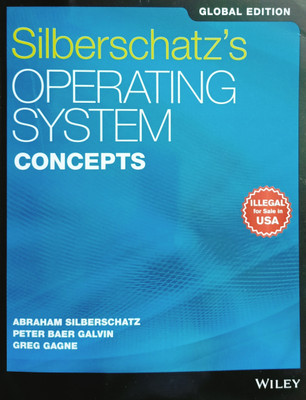Silberschatz's Operating System Concepts(Paperback, Abraham Silberschatz, Peter B. Galvin ( Greg Gagne)
Quick Overview
Product Price Comparison
Operating systems are an essential part of any computer system. Similarly, a course on operating systems is an essential part of any computer science edu- cation. This field is undergoing rapid change, as computers are now prevalent in virtually every arena of day-to-day life-from embedded devices in auto- mobiles through the most sophisticated planning tools for governments and multinational firms. Yet the fundamental concepts remain fairly clear, and it is on these that we base this book..We wrote this book as a text for an introductory course in operating systems at the junior or senior undergraduate level or the first-year graduate level. We hope that practitioners will also find it useful. It provides a clear description of the concepts that underlie operating systems. As prerequisites, we assume that the reader is familiar with basic data structures, computer organization. and a high-level language, such as C or Java. The hardware topics required to understand operating systems are covered in Chapter 1. In that chapter, we also include an overview of the fundamental data structures that are prevalent in most operating systems. For code examples, we use predominantly C, as well as a significant amount of Java, but the reader can still understand the algorithms without a thorough knowledge of these languages.Concepts are presented using intuitive descriptions. Important theoretical results are covered, but formal proofs are largely omitted. The bibliographical notes at the end of each chapter contain pointers to research papers in which results were first presented and proved, as well as references to recent material for further reading. In place of proofs, figures and examples are used to suggest why we should expect the result in question to be true.The fundamental concepts and algorithms covered in the book are often based on those used in both open-source and commercial operating systems. Our aim is to present these concepts and algorithms in a general setting that is not tied to one particular operating system. However, we present a large number of examples that pertain to the most popular and the most innovative operating systems, including Linux, Microsoft Windows, Apple macos (the original name, OS X, was changed in 2016 to match the naming scheme of other Apple products), and Solaris. We also include examples of both Android and iOS, currently the two dominant mobile operating systems.The organization of the text reflects our many years of teaching courseson operating systems. Consideration was also given to the feedback provided


